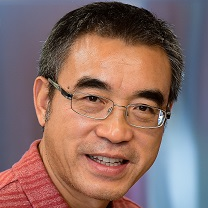Mechanical Properties of Tissue Engineering Scaffolds
A special issue of Journal of Functional Biomaterials (ISSN 2079-4983).
Deadline for manuscript submissions: closed (31 August 2016) | Viewed by 29604
Special Issue Editor
Interests: biofabrication; bioprinting; tissue engineering; mechanical engineering
Special Issues, Collections and Topics in MDPI journals
Special Issue Information
Dear Colleagues,
Tissue engineering (TE) is an emerging field that aims to produce tissue/organ substitutes or scaffolds that can grow with patients, ultimately providing a permanent solution to those who are damaged. Made from biomaterials with a porous structure, scaffolds are used to support and promote cell growth and tissue regeneration and, for this, their mechanical properties play an important role. Thus, knowing the mechanical properties of scaffolds during the course, from in vitro cell culture to in vivo implantation, is essential. Notably, the mechanical properties of scaffolds are not constant but depend upon time as the cells grow and the scaffold degrades. This Special Issue aims at providing a platform to survey and report the recent advances of the mechanical properties of TE scaffolds, which may include, but is not limited to, desired mechanical properties imposed on scaffolds, design and fabrication of scaffolds with desired mechanical properties, methods to measure and/or model mechanical properties of scaffolds, and the influence of scaffold mechanical properties on cell growth and tissue regeneration.
Prof. Dr. Daniel X.B. Chen
Guest Editor
Manuscript Submission Information
Manuscripts should be submitted online at www.mdpi.com by registering and logging in to this website. Once you are registered, click here to go to the submission form. Manuscripts can be submitted until the deadline. All submissions that pass pre-check are peer-reviewed. Accepted papers will be published continuously in the journal (as soon as accepted) and will be listed together on the special issue website. Research articles, review articles as well as short communications are invited. For planned papers, a title and short abstract (about 100 words) can be sent to the Editorial Office for announcement on this website.
Submitted manuscripts should not have been published previously, nor be under consideration for publication elsewhere (except conference proceedings papers). All manuscripts are thoroughly refereed through a single-blind peer-review process. A guide for authors and other relevant information for submission of manuscripts is available on the Instructions for Authors page. Journal of Functional Biomaterials is an international peer-reviewed open access monthly journal published by MDPI.
Please visit the Instructions for Authors page before submitting a manuscript. The Article Processing Charge (APC) for publication in this open access journal is 2700 CHF (Swiss Francs). Submitted papers should be well formatted and use good English. Authors may use MDPI's English editing service prior to publication or during author revisions.
Keywords
- tissue engineering
- scaffolds
- mechanical properties
- cell growth
- tissue regeneration
- biomaterials
- degradation
- scaffold design
- scaffold fabrication
- modeling
- measure
- in vitro; in vivo






